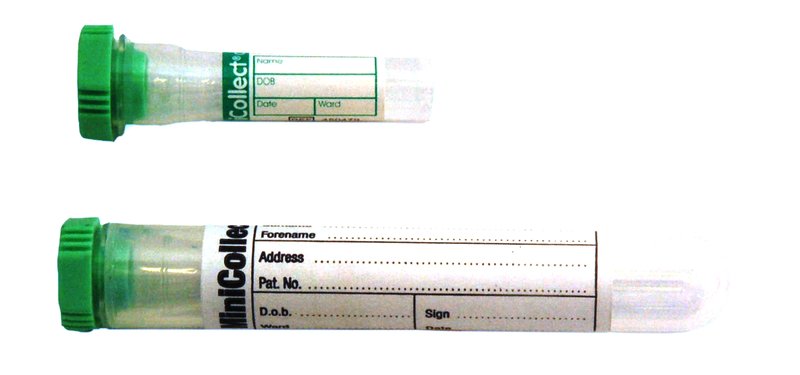Lactate dehydrogenase (LDH)
Chemical Pathology
Notes
- LDH is widespread in all cells of the body. This enzyme exists in five isoenzyme forms, but only total activity is assayed in this laboratory.
- The diagnostic value of a single LDH measurement is limited, but has some application in neoplastic states (especially lymphoma, seminoma and hepatic metastases), haemolytic and megaloblastic anaemias, renal infarction, and pancreatitis.
- LDH is a non-specific indicator of disease and is raised in numerous processes involving tissue damage. Increased levels are found in myocardial infarction although its routine use as a marker of late presentation of MI has been replaced by Troponin T.
- Because erythrocytes contain very high levels of this enzyme, delayed separation of cells from blood (>8 hours) or haemolysis of cells will cause falsely high levels.
Sample requirements
For adults, blood taken into a 5mL gold top tube (or rust top for the Acute Unit)

For children, blood taken into a 3.5mL rust top tube

For neonates, blood taken into a 0.8mL minicollect lithium heparin tube. Please list the tests of particular interest so that some priority can be given to analysis if plasma volumes are small.

Storage/transport
Do not store. Send at ambient temperature to the laboratory in less than 8 hours.
Required information
Reason for requesting the test. Relevant drug therapy.
State the date and time of sample collection on the request form.
Turnaround times
The assays are run throughout the day and night.
The in-lab turnaround time is normally less than 24 hours.
The test can be ordered as an urgent request.
Reference ranges
| Age | Reference range (U/L) |
|---|---|
| 0 to 15 days | <1128 |
| 15 days to 1 year | <424 |
| 1 year to 10 years | <305 |
| 10 years to 15 years | <260 |
| >15 years | <250 |